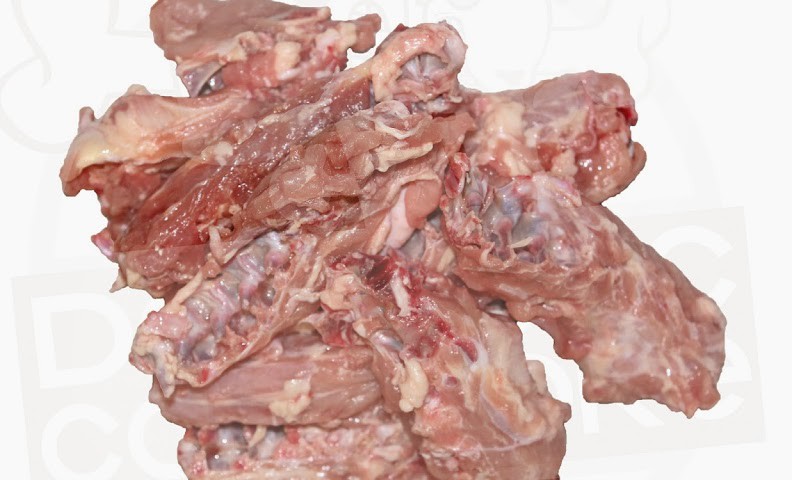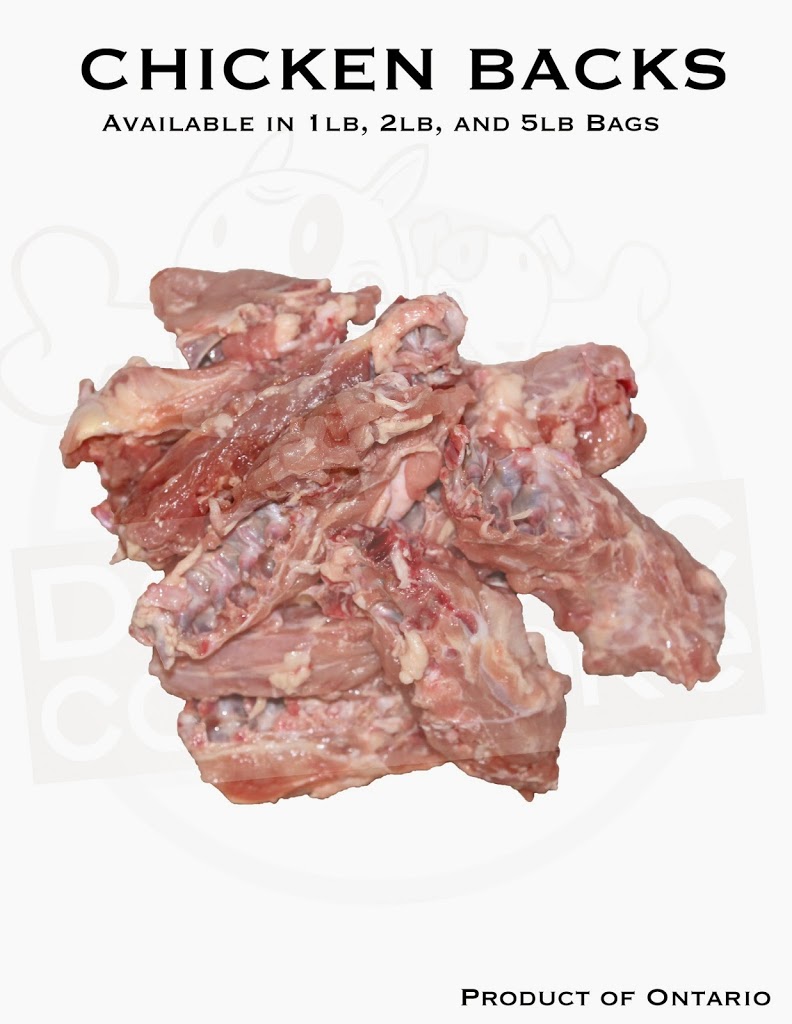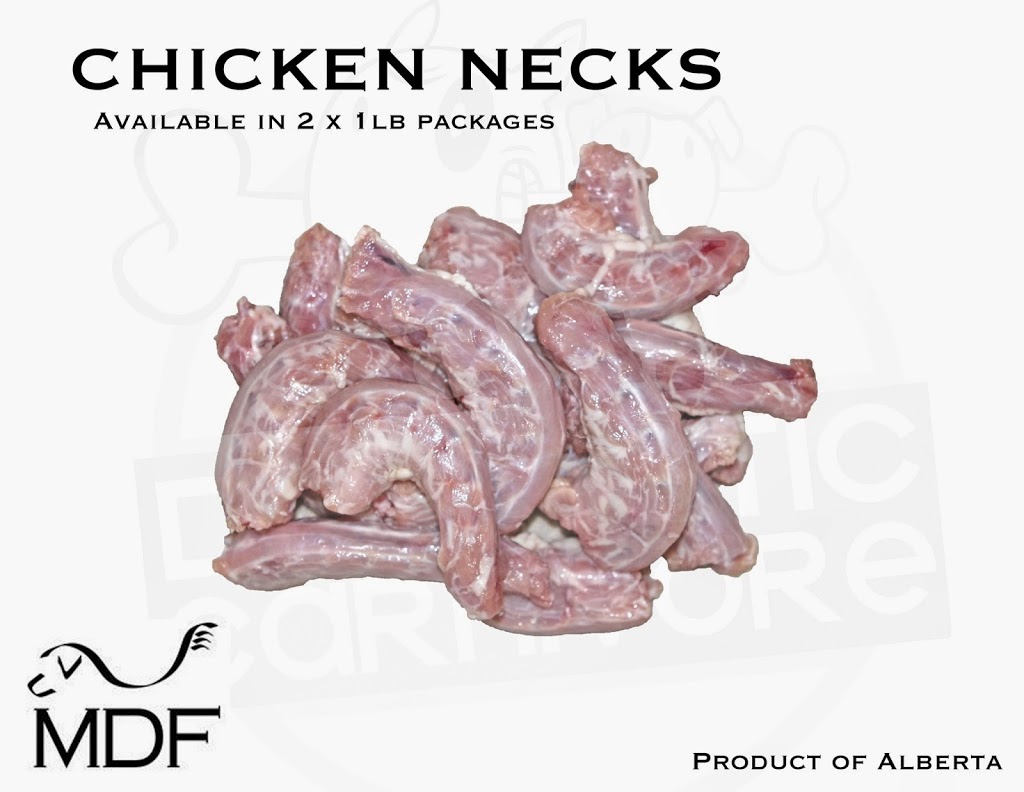Raw, meaty bones are a recommended part of a balanced, species appropriate diet. Raw, meaty bones are our dog and cat’s natural toothbrushes. The action of tearing, crunching, and ripping off the meat cleans their teeth and provides mental stimulation.
The type of bones and how they are fed depends on the size of the animal and their chewing style. For example, a 5lb dog or cat would do great with a chicken neck or back, but a turkey neck would be more than 10 days worth of food. At the same time, an 80lb dog may try to swallow small food, such as chicken backs and necks, whole. This would eliminate the chewing benefit and could create a choking hazard.
Each month, we will feature a different protein source on our blog. Protein rotation is an important part of a raw diet and we will provide an overview of the benefits and drawbacks of each protein source.
Protein Feature: Chicken
Chicken is a great protein source and due to its availability, it is also more affordable than some of the other options, like beef and duck. Another benefit of chicken is the variation in meat cuts. Unlike other protein sources that may not offer small dog options, chicken can be fed to dogs and cats of all sizes. For a small dog or cat, chicken necks or feet provide a good chew, while large dogs may do well with a whole chicken or frame. Chicken tends to be a higher fat option as most grinds and raw, meaty bones include the skin. While it is an excellent food to offer in a healthy rotation of proteins, it may not be the best choice for dogs with inflammatory conditions or other fat related health concerns.
We are often asked about the dangers of chicken bones. Chicken bones, along with bones from other poultry, are safe to feed as long as they are raw. Any cooked bone is dangerous as it can chip and shard. Cooked bones are also indigestible which poses a risk to your pet’s GI tract. Raw chicken bones are an excellent choice for most pets as they are small and easy to crunch.
We are often asked about the dangers of chicken bones. Chicken bones, along with bones from other poultry, are safe to feed as long as they are raw. Any cooked bone is dangerous as it can chip and shard. Cooked bones are also indigestible which poses a risk to your pet’s GI tract. Raw chicken bones are an excellent choice for most pets as they are small and easy to crunch.
While food sensitivities are always increasing, it’s important to understand the cause of the intolerance. Studies are looking into how the diet of animals affects the meat itself. It is theorized that the causes of food sensitivities are more likely related to the diet of the animals you are feeding than to the protein source itself. For example, a pet with food sensitivities to grains may react to grain fed beef, but not to grass fed beef. Chickens are generally grain fed, which is one of the reasons so many pets are developing food sensitivities to chicken. If you have an itchy pet and you want to determine if they have food sensitivities, we recommend you either try an elimination diet or perform a Nutriscan food sensitivity test.
A breakdown of each raw, meaty bone and its benefits:
Chicken Necks and Backs
Chicken necks and backs are small raw meaty bones, each weighing about 1-1.5 ounces. The bones are small and soft, making them an ideal choice for cats and dogs of all sizes. They are a source of glucosamine and chondroitin and provide all of the benefits of chicken, including protein, iron, calcium, niacin, essential fatty acids, Vitamin A, and B Vitamins. Chicken backs have some skin attached, which means they contain more fat than the chicken necks. Fat is an important part of a balanced, but feeding too much fat can lead to nutrient imbalances.
Chicken Feet
Due to the number of joints in a chicken foot, they are a good source of glucosamine and chondroitin. The amount of muscle meat on a chicken foot in minimal, so they are best as an occasional treat. They average about an ounce each, making them an easy chew for cats and dogs of all sizes.
NEVER COOK A RAW BONE.
ALWAYS SUPERVISE YOUR PET WHILE THEY ARE EATING.





